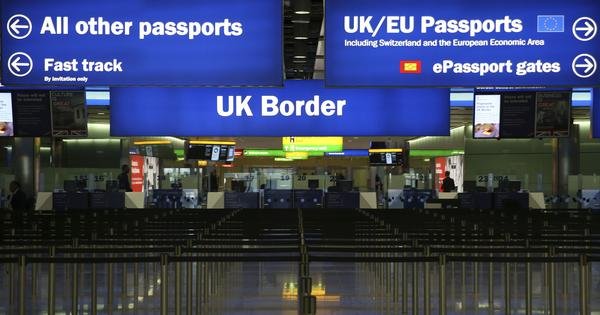Understanding Low-Skilled Migration in the UK: Busting Common Myths

The UK government has shared plans to reduce low-skilled migration. They want to connect skills and training to the immigration system. The goal is to make sure no industry depends only on immigration to fill skills gaps.
Research I did with colleagues on employer strategies after Brexit shows that comparing legal routes for migrant workers with investing in the local workforce is flawed. Evidence from sectors like transport, food manufacturing, hospitality, and social care debunks four myths about migration and the labor market.
Myth 1: Migration Stops Training
Employers and the state have not invested enough in skills in the UK’s deregulated economy. However, the idea that employers hire migrants instead of training local workers is not always true.
Our research shows that migration can help workplace learning. It can also encourage employers to invest in training. We looked at employers’ practices after Brexit. Firms that invested more in training or wanted diverse workforces were usually larger. They had the money and HR capacity to deal with migration hurdles. For small and medium-sized businesses, this system is still costly and complicated.
Previous research showed that employers who hired migrant workers after Brexit were also more likely to invest in the local workforce or in technology. The government should see hiring migrants as adding to, not replacing, the local labor force.
Myth 2: Migrants vs Unemployed Youth
The government’s plans often compare migrants with NEETs (young people not in education, employment, or training). This suggests that the growing number of these young people is because employers use low-skilled migration.
Engaging economically inactive people and focusing on training local workers are strict conditions for employers who want to recruit from abroad. However, the idea of replacing migrants with economically inactive people is too simple.
Our research found that young people often refuse to work in these sectors because of poor conditions, not because employers favor migrants. Even with small pay increases and other benefits to deal with staff shortages, pay across these sectors stays at the minimum wage.
This leads to high staff turnover, hard work, and insecure contracts, making these jobs unattractive. Introducing fair pay agreements in the care sector and financially supporting local authorities and care providers could attract young people. Improving pay and conditions must be a priority.
Myth 3: Temporary Migration is a Good Option
The government suggests raising the skills threshold and including a temporary shortage list. For jobs with a skills requirement below degree level, employers can use the immigration system only temporarily. This is not a big change from previous temporary schemes.
Our research shows that allowing migrants entry only through a limited number of schemes has led to too many visa applications in one route. This contributed to misuse of the system, fake employers, and exploitative practices.
Our research with migrant care workers who lost their sponsoring employer showed barriers to finding a new sponsor. Only a small number of care providers can guarantee full-time employment. Reactive and temporary visa schemes have been bad for both workers and businesses.
A migration system that lets workers stay and do well in their jobs, bring their families, and build stable lives can reduce labor turnover. This can improve productivity and lead to a long-term workforce strategy.
Myth 4: Migration Hurts the Economy
The government’s new immigration system risks slowing down its plan for growth. Ministers have based their new plan on the idea that increased net migration hurts the UK, referring to the decrease in GDP per capita during the increase in net migration.
However, there is plenty of evidence that leaving the European common market and external shocks like the Covid pandemic and war in Ukraine have caused the UK’s economic decline. The UK recorded one of the largest slowdowns in productivity among the G7 in 2023.
In contrast, our research shows that migrants are vital not just in sectors like social care, but also in those considered low-skilled by the government. Workers in logistics, hospitality, and food manufacturing were treated as essential during Covid but soon forgotten and considered low-value.
Our research calls for a new look at these foundational sectors. They represent the backbone of industries considered important by the government’s own industrial growth strategy.
For a joined-up approach to be truly effective, employers’ associations, trade unions, and migrant advocacy groups, together with national and local governments, must contribute to longer-term migration plans. These should consider industry needs, migrant workers’ wellbeing, and the viability of public services and other critical sectors affected by stricter migration requirements.
Telling firms they need to invest in the local workforce before they can hire from abroad seems unrealistic. Training is not a quick fix; it requires time and investment from employers and the state. Ultimately, improved pay and working conditions are likely to make these sectors more attractive to the local population.
Gabriella Alberti is Professor of International Labour Migration, University of Leeds.
This article was first published on The Conversation.



